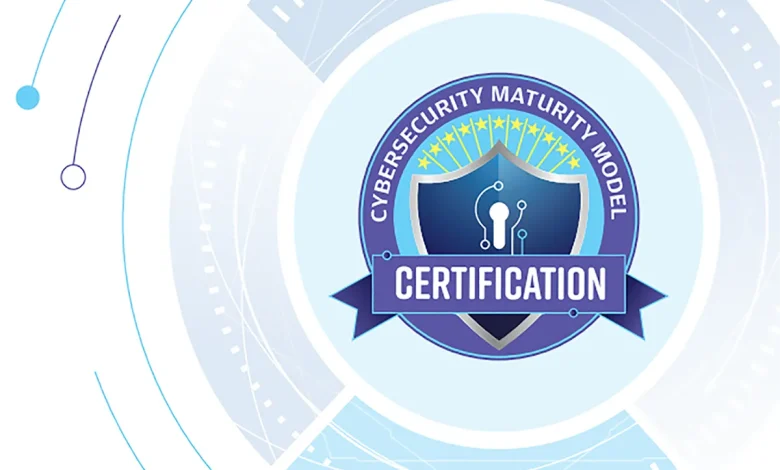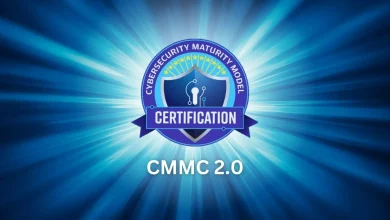Confused by CMMC 2.0? The Shared Responsibility Matrix Clears the Fog

If the term “shared responsibility matrix” makes you picture a giant spreadsheet no one wants to read, you’re not alone. But what if that grid is the key to understanding exactly what you’re supposed to do—and what your vendors should be doing—under CMMC 2.0? This tool isn’t just paperwork; it’s clarity in a format that finally makes sense.
Understanding CMMC 2.0 Roles Clearly with the Shared Responsibility Matrix
Think of the shared responsibility matrix as a decoder ring for CMMC 2.0. It breaks down the complicated framework into understandable slices of responsibility between your internal teams and external service providers. That’s a big deal when you’re trying to meet Department of Defense (DoD) cybersecurity requirements without tripping over who does what.
For organizations in regulated industries like defense contracting or maritime logistics, it’s not just about installing security tools—it’s about knowing who configures them, who monitors them, and who reports when something breaks. The shared responsibility matrix untangles that web. It maps out each control and marks whether it’s on your plate or your vendor’s. Instead of assumptions, you get black-and-white answers—less confusion, fewer gaps, more confidence.
How the Shared Responsibility Matrix Simplifies DoD Compliance
Compliance doesn’t care if your team thought the vendor was handling it. That’s where the shared responsibility matrix really shines. It aligns your security operations with actual expectations from CMMC 2.0 and the DoD by clearly assigning ownership of every control.
Let’s say you rely on a managed service provider for endpoint security. You might assume they’re taking care of all the logging and reporting. But unless it’s detailed in your shared responsibility matrix, you might be on the hook. This matrix cuts through the gray areas, listing who does what and what’s expected at each level of CMMC maturity. That level of clarity can mean the difference between passing and failing an audit—and possibly winning or losing a federal contract.
Who Handles What? The Shared Responsibility Matrix Breaks Down CMMC 2.0
One of the biggest challenges for regulated industries is misaligned expectations. In the world of CMMC 2.0, it’s easy to get tripped up by assuming a vendor is managing a particular security control—only to discover too late that they aren’t. The shared responsibility matrix breaks that illusion by spelling out every control requirement and who’s in charge of it.
This isn’t just helpful—it’s necessary. It helps defense contractors, education providers, and manufacturers understand how much of their cybersecurity program they actually control, and where a provider needs to step in. You no longer need to sift through vague contracts or confusing service level agreements. The matrix gives you the clarity to make informed decisions and to hold others accountable—because you know exactly who owns what.
Simplifying Cybersecurity Responsibilities Under CMMC 2.0
Cybersecurity standards can feel like a never-ending to-do list. The shared responsibility matrix cuts through that clutter. It takes all those complex NIST and CMMC controls and organizes them into a simple format where accountability is shared, not shuffled.
For IT managers or compliance officers, this is a game-changer. You don’t need to be an expert on every line of the CMMC documentation. Instead, the matrix shows which controls require internal actions and which are the responsibility of your cybersecurity vendor or MSSP. This is how you make compliance both manageable and strategic—by understanding your real workload.
Eliminating Compliance Guesswork with the Shared Responsibility Matrix
There’s no room for assumptions in cybersecurity compliance. And yet, many organizations still “hope” their provider is covering the right CMMC requirements. The shared responsibility matrix eliminates that kind of risk by putting everything in writing—clearly and simply.
The matrix doesn’t just reduce confusion. It acts like a contract in spirit, if not in legal terms. It forces you and your provider to explicitly agree on responsibilities. For government contractors working toward Level 2 or Level 3 compliance, that clarity helps prepare for third-party assessments and mitigates the risk of noncompliance penalties. It’s about removing uncertainty before it costs you.
Where Your Duties End and Vendor Duties Begin Under CMMC 2.0
One of the top questions organizations ask during their compliance journey is, “Where do my responsibilities stop?” That question gets a straightforward answer from the shared responsibility matrix. It shows exactly where your security duties end and where your MSSP or cloud provider picks up the baton.
This clarity matters in regulated spaces where data security isn’t just best practice—it’s a legal requirement. When your responsibilities are clearly laid out, you can focus your resources where they matter most. No more overcompensating on controls you don’t even own or missing ones that fall squarely in your lap. This matrix becomes your cybersecurity map, guiding your team through every checkpoint with confidence.
Clarifying Accountability in CMMC 2.0 Through a Shared Responsibility Lens
Too often, security responsibilities get lost in translation between internal teams and external vendors. The shared responsibility matrix acts as a universal language, aligning both parties with the CMMC 2.0 model. No more relying on vague contracts or second-hand assumptions.
Each line item in the matrix becomes a checkpoint for accountability. If your organization handles multi-tenant environments or deals with subcontractors, this becomes even more essential. The shared responsibility matrix breaks down that complexity into digestible chunks, making it easier to identify weaknesses and close gaps. It doesn’t just make audits smoother—it ensures that you’re actually secure, not just appearing to be.






